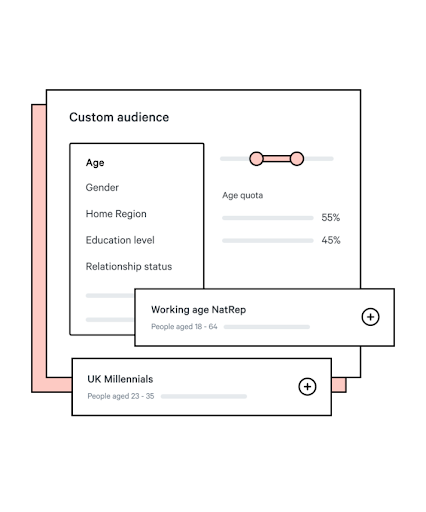- Market-Inspector.co.uk
- Blog
- How to Calculate Market Size
Calculate B2B Market Size Potential
Here Is How To Calculate B2B Market Size Potential And Why It Is Important
A business-to-business enterprise is already fighting an uphill battle amongst steep competition as soon as they start creating their business plan. However, if you set your foundation on firm knowledge of market analysis and market research, you will find the way forward is much more accessible.
Detailed insights on your competitors and target customers can allow you to gauge the market risks and scope out the best opportunities in your niche. The strength of your market size potential is an estimated measure of credibility of your business plan. If you intend to secure funding or venture capital financing for your project, the market size potential report is critical for this purpose.
Why is B2B Market Size Potential Important?
Even if your goal is not central to seeking external funding, you still need to understand your market potential for strategic decision-making. This is particularly applicable for:
Not just the size but also the nature of your market potential can have a deep impact on tactical decisions such as selecting the right bank and legal representation for your business.
A thorough analysis of your market potential is important to get a clear idea of the true addressable size of your target demographic.
Compared to the overall market size, addressable size refers to the number of customers that you can transact with at the same time. This gives you a better plan of action for your sales strategy and profit projections.
You will also need to know your addressable market size before you fire up a product launch email to announce the arrival of your business to the world.
You need the estimate to have a game plan of the number of resources to allocate to the sales strategy. You do not want to hire too many team members and ruin the starting budget or hire less people and underperform every quarter.
The fate of your entire business success is delicately balanced on market size potential analysis.
Here you will know what goes into calculating an in-depth market size potential report.
So, let's dive right in!
1. Define the Target Market
Your entire market size analysis hinges on this first step. Define the target market and more importantly, stick to this determination of your defined market when you are processing your data collection for the analysis.
As mentioned already, the market size is categorized into the overall available market and addressable market size. The industry terms are different and it is better to explain this in the industry jargon for uniformity.
Your market size determination has to take into account each of the above categories and the products or services included within the total available market. You can then streamline it on the basis of additional factors such as the geographical scope and time frame of projections for accurate determination of the various sections of your market size.
2. Estimate Potential Target Customers
You have to estimate the total quantity of target customers to define your audience size. The best way that most companies do it is by researching companies with a similar profile as theirs.
Competitor analysis can take help from already established data parameters to set the target customer potential accurately without hours of effort. You can also check public available records to check for target customer size based on the geographical demographic.
3. Determine Your Calculation Approach

The approach for calculation will affect the way you segregate your market size and the way you approach your eventual business decisions based on the estimate.
The ideal scenario would be to use a multi-approach methodology for calculation of market size. This will validate the information that you collect and also give you a different perspective on the same data.
The two main methodology that are most popular for market size calculation are:
The bottom-up approach is a more accurate estimate of the market size because it is made up of various units of addressable market size only.
The superfluous market share, which does not concern your business, is not a part of the calculation at all.
4. Calculate the Penetration Rate
The penetration rate of your product will give you the exact estimate to the projected growth of your product and accumulation of served available markets. This rate is entirely dependent on the nature of your product and its functionality.
The more critical your product is for the audience, the higher the penetration rate in the market. However, in cases where the product is just vital for a specialized category of people, the penetration rate will be considerably slower.
For instance, computers are a critical product for almost all people. The target demographic is large. The penetration rate is also quite steep because at any given time, more people are joining the stride towards technology.
However, if you are developing an artificial intelligence system, it is a super specialized product. Only a minority of industries and businesses would be working actively with AI to serve or create products.
Your entire target demographic is acutely small in this situation. Also, the competition is much higher because every company that is launched in the market will be trying to occupy a share of the market from the same pool of served available markets.
The penetration rate is therefore incredibly slower compared to the previous product example.
5. Trend Structuring
The data you collect at each point of the market size research can be further filtered through active trends in the industry. This will give you a qualitative analysis of the data.
The served available market is also open to categorization according to the priority segments. This way you know which segment should be approached first for the best results.
So for instance, if you have a food packaging business that caters to other businesses working with food, you can further categorize this available market on the basis of food segments, like beverages, frozen foods or meat and poultry. The trends in egg packaging will be vastly different to that of canned foods.
Again, the data can be filtered according to the type of packaging and also the fill technology used to insert the food into the packaging. This approach will help you address the right market at the right time and cinch better deals and larger orders for your company.
6. Analysis of the Data

Finally, the data that has been collected and filtered so far, needs to be analyzed to put into a structure that gives a most comprehensive overview of your market size potential. Here again, a multi-system approach will work better for the results.
In industry jargon, it is referred to as data triangulation. Triangulating with multiple sources and approach to segment the data helps to increase the credibility of the final estimate that stands at the end of the process.
If the approaches conflict with each other, you should use a different approach to reevaluate the data and reduce the overall risk of the final analysis.
Look out for any of these mistakes before beginning the analysis:
The analysis should help you confirm your data without doubt. You can then leverage the findings to secure the best resources to activate your business plan.
Knowing Your B2B Market
Market size matters because it can shape an effective marketing strategy to meet your projected sales targets and maximize your profits.
Apart from that, the market size estimate will also help you allocate the different marketing resources more responsibly amongst your available divisions.
The ultimate goal is to define the size of the sales universe that applies to your individual business. It is within these limits that you will carve out your addressable market segment and ultimately the share of the market that you personally serve.
Everything from the market value to product research is so intrinsically tied with the market size potential. To begin your business plan without a forethought on this report is just a waste of time.
We strive to connect our customers with the right product and supplier. Would you like to be part of Market Inspector?





